At 5’9” with a weight of 168 lbs, I have an average adult male build. Without having formally measured it, let’s guesstimate that I have a vertical reach of seven feet and my standing vertical jump is 24. In theory, I should be able to jump and touch the top of a nine-foot wall without difficulty. But what about getting myself completely on top of that same wall in fewer than five seconds?
Hauling your entire body to the top of an overhead wall with speed presents an entirely different challenge. In fact, just standing beneath a nine- or ten-foot wall and contemplating how to get on top of it can be daunting. It might even invoke a mini fear-response. If you’ve ever paddled a surfboard through overhead waves, you might know what I’m talking about.
Yet, it’s not impossible. Parkour athletes routinely scale overhead walls with speed and apparent ease. The technique for getting yourself on top of an overhead wall is known as a wall run, and can be learned through a few basic steps.
Note: Are you an aspiring obstacle course racer? Listen up. This technique will help you glide over barriers faster than the competition.
At this point, it’d be helpful for you to go back and read an earlier Pulse Beat Fit article about a parkour technique known as the climb-up. Having a strong climb-up in your movement arsenal will have a dramatic impact on your ability to perform a fast and effective wall run. Without being too repetitive, a climb-up is basically the skill for getting your body from a hanging position to the top of a wall. By piecing together a way to jump and grasp the top of a wall, with a way to pull yourself up and on top, you will have the skills to perform a wall run.
It should come as no surprise that to perform a wall run, a bit of running is involved. It’s not much, but you’ll need an approach to the wall that allows for at least three to four running strides. More running is fine – just don’t wear yourself out on the approach with a super long run.
Before you take your first run-up, stand away from the vertical surface, with one leg extended and the foot placed against the wall at the height of your pelvis. The position of your other foot on the ground marks the launch point for where you are going to want to take off. Next, take a few steps backward and practice striding up toward the wall so that you end up with one foot positioned at the launch point. Work on lifting your other foot to strike the wall at between thigh and waist height. Once you got the basic step pattern down, try to add a hop, so that you bounce from the ground and rebound through your foot on the wall.
A word of caution is needed at this stage. Be sure to stay very “active” through the leg that makes contact with the wall. If you strike the wall with an ankle that isn’t ready for impact, it could be easy to tear your Achilles tendon or suffer a nasty ankle sprain. So, as you raise your foot to strike the wall, get in the habit of reaching through the ball of your foot, emphasizing active plantar flexion of your ankle.
Now here comes the fun part: Start to add some speed on your approach to the wall and begin pushing through it to translate your forward movement to vertical motion. Think of your using your “wall” foot as a pole-vault, propelling yourself upward. Your leg shouldn’t be locked out in extension. It should be slightly flexed, ready for impact, and prepped to recoil.
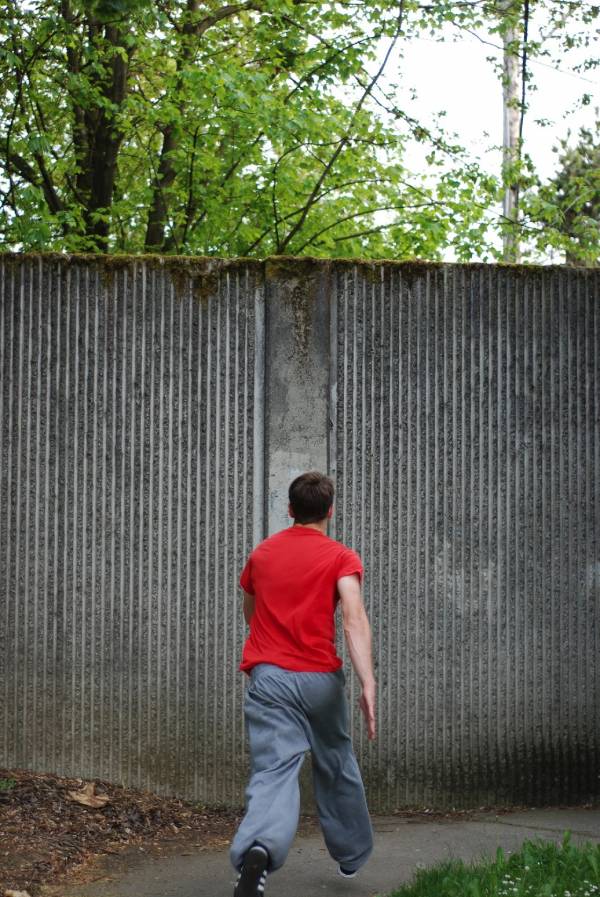
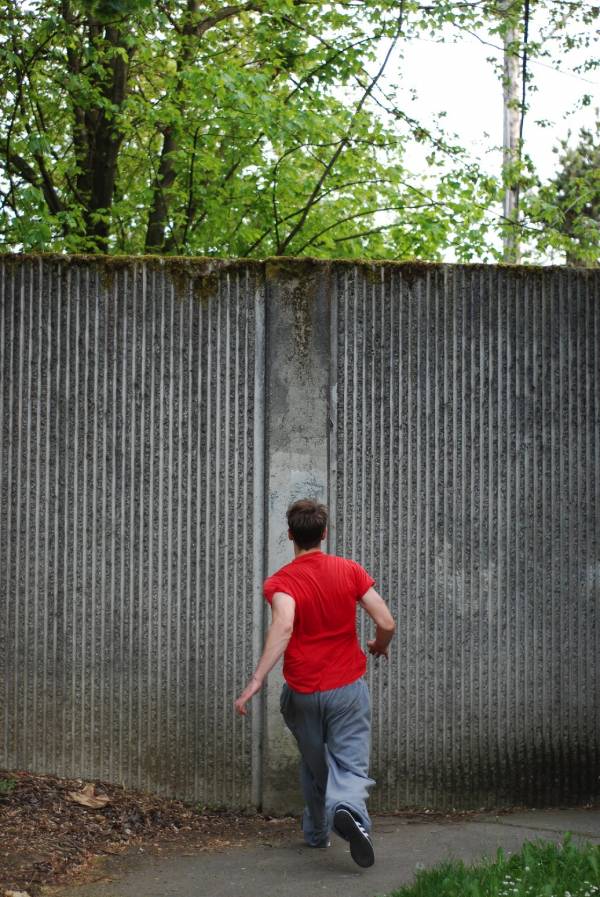
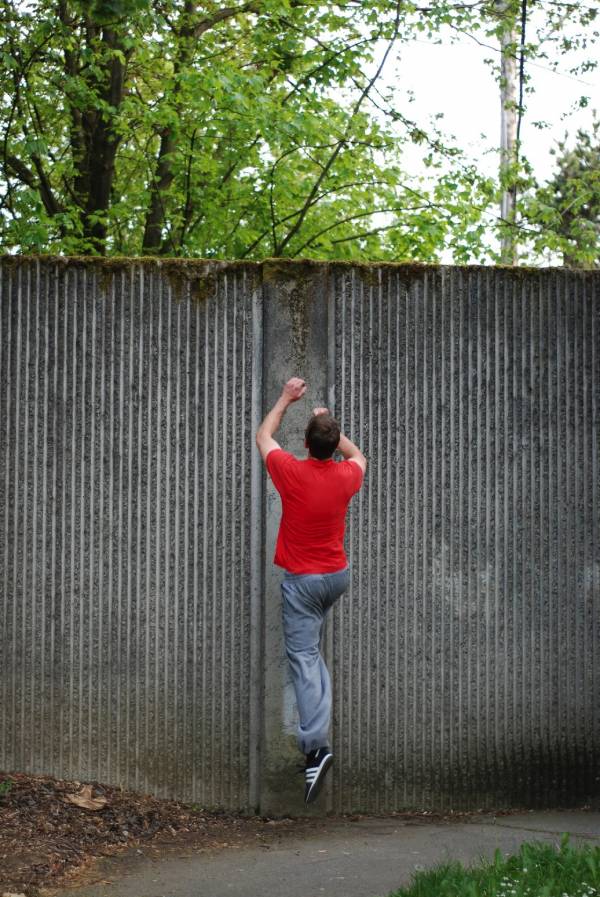
Drive hard through that leg, pushing yourself even higher. Imagine pushing off a ledge, basically performing a second single leg jump up the wall.
Reaching up to grab the top of the wall is the next step and it should come quite instinctively. Try to grab the edge with both hands at the same time. If you’re really stretched to your max height, reaching up with one hand will give you an extra reach, but it is much harder on your shoulder.
Get as much as surface area of your hands on the top of the wall as you can. And, protect your shoulders from the force, by retracting them down your back.
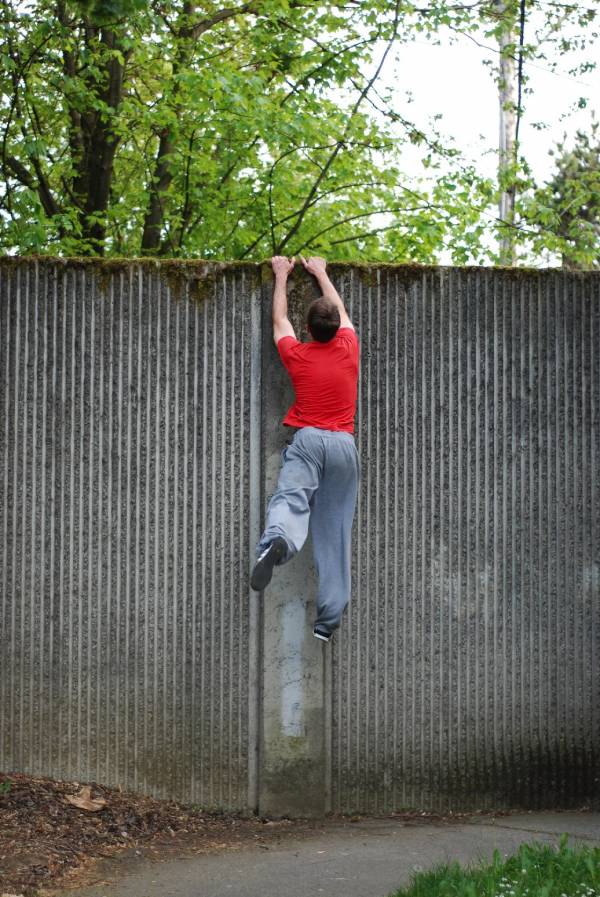
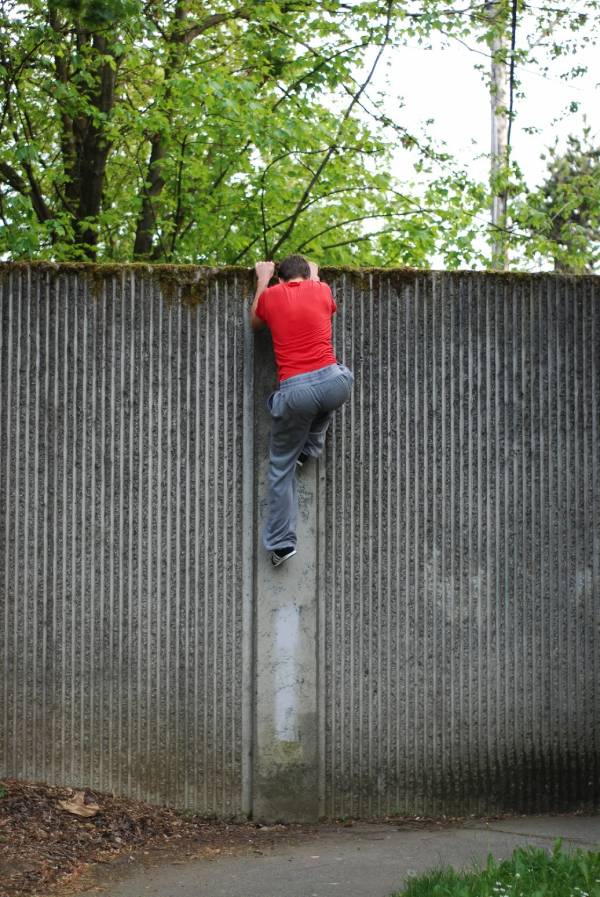
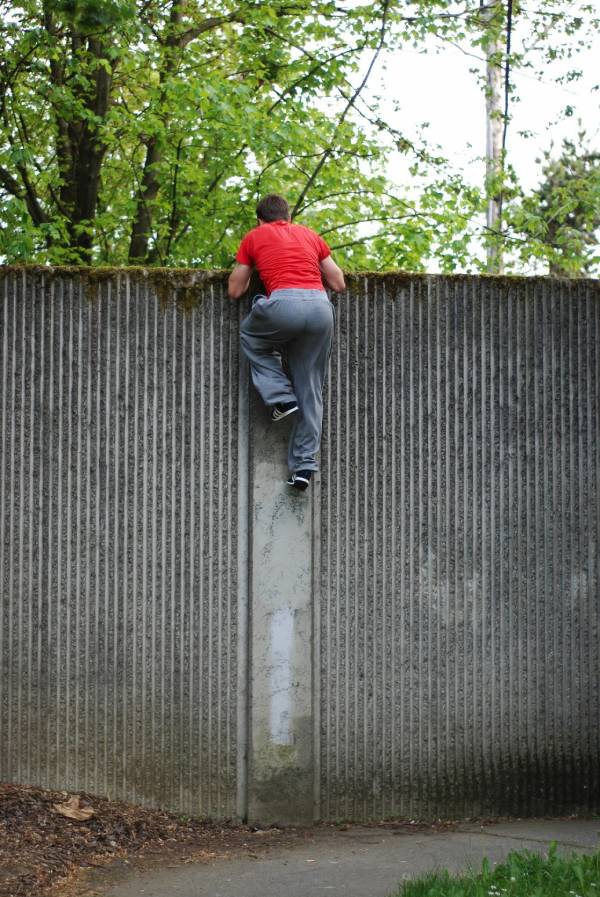
You’re now dangling above the ground and ready to top out. Scramble your feet beneath you so that you can push through your legs, recalling the mechanics of the climb-up. Fire your lats to pull your chest above the top edge, and then push down through your hands to lift your entire body up the wall.
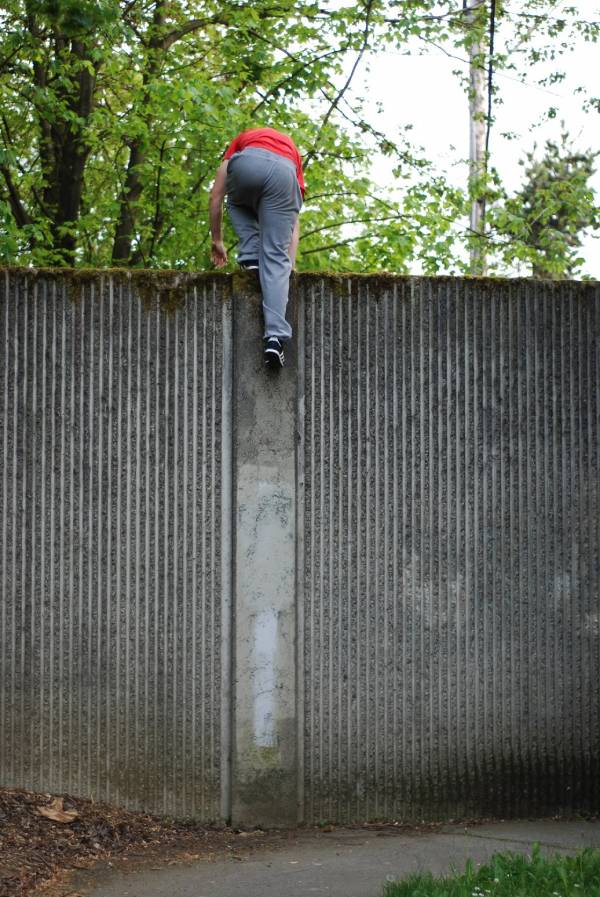
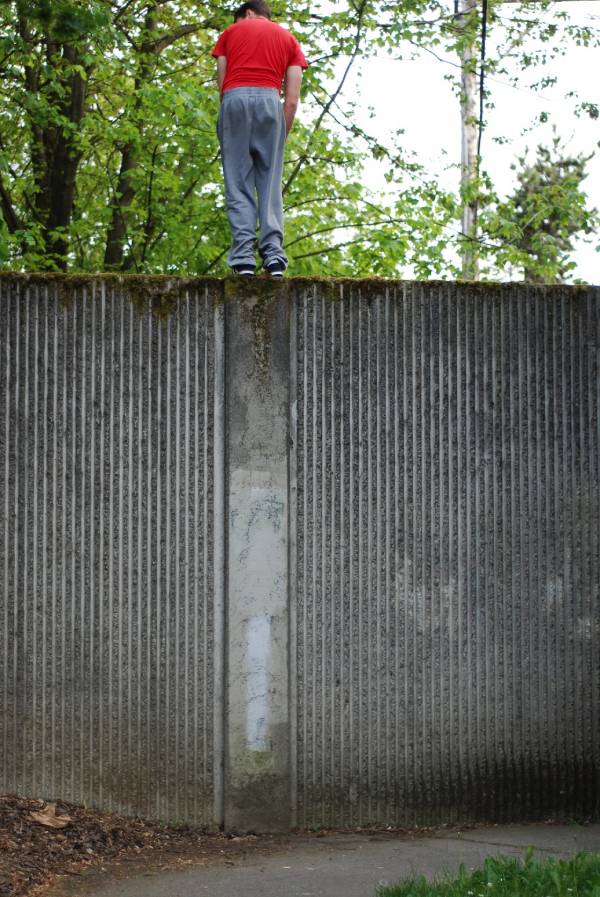
Place one foot on top, and stand up. You made it. You ran up a wall!






